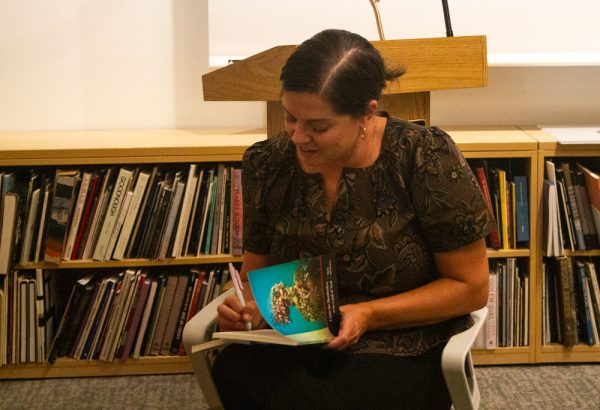Ambrose Akinmusire’s ‘Origami Harvest’ inspires with ‘lingering velocity’
Ambrose Akinmusire is a trumpeter and composer who, for the past ten years, has been creating jazz fusion tunes that communicate with culture while holding a steady hand on the constraints of genre.
His new album, “Origami Harvest,” comes out On Oct. 12. After the release of the single, “a blooming bloodfruit in a hoodie,” ‘highly-anticipated’ became an understatement with regard to the album’s release.
“a blooming bloodfruit in a hoodie” is a twelve-minute poetic conversation. It opens with a beautiful but standard composition highlighting soft piano and strings. At around the two-minute mark, the listener begins to hear the melancholic hopefulness pushing on the sound and increasing the tempo. Then, the rapper Kool A.D. — best known for his work with Das Racist — enters the scene.
Kool A.D.’s stream of consciousness lyric takes the form of a self-aware poem testifying to the importance of rap, poetry, and music. The spirit of the song, though contemplative, cements its positivity with lines like, “love only loves/it couldn’t begin to discriminate.” Gradually, the rapping retreats and the quartet, trumpet, and drums takes the focus again.
In light of the recent release of the Quincy Jones documentary, “Quincy,” we are reminded that the pairing of jazz and hip-hop is an obvious marriage. A memorable quote from Jones is that he never saw the clear distinctions between genres; the only distinction was good and bad music. And this — this is good music.
Along with Akinmusire’s innovation in genre, he is also consistently commenting on important cultural moments. In “Free, White, and 21,” the listener is presented with a list of names. These names are black Americans who have died at the hands of police brutality. Meanwhile, the instrumentation is whimsical and joyous. The darkly comic juxtaposition makes the track extremely difficult to listen to. Akinmusire’s composition deftly captures the stark divide between a white and black experience in America.
Another standout is “The lingering velocity of the dead’s ambitions.” With an earnest energy and dissonance, the song opens with a barrier of cacophonic sound. The track situates the reader as pushing against an immovable wall. After two difficult minutes, the piece softens, and the trumpet begins playing a more comfortable melody.
Dramatic string arrangements and an ambitious trumpet rebuild the foundation of the piece. In the last two minutes, the listener is hit with zipping strings at a higher intensity — much like the opening.
Framed in this way, the track seems to suggest that barriers will reconstruct themselves even after breakthroughs occur. As the album winds to a close, we are left with the sense that the music is still pushing forward, always pushing. Akinmusire’s compositions inspire us to do the same.












